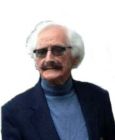Environment
The Nature of 'Being'
"To be, or not to be"—it is a question that is relevant to every one of us
Posted October 12, 2012

One of the best known sentences in English literature is that with which Hamlet commences his soliloquy in Shakespeare’s play The Tragedy of Hamlet with the words, “To be, or not to be, that is the question…” Now in the context of the play, Hamlet, burdened with his father’s death and mothers’ guilt, is asking the question as he contemplates suicide. Yet it is a question that is relevant to every one of us in our normal daily life. For to say that one is in a state of ‘being’ is simply to acknowledge that one is alive – whereas the ‘not to be’ part signifies that one is dead. And how to reconcile these two ‘realities’ is indeed the unavoidable question we have been asking ever since human consciousness became fully operational. (Yet are some animals – possibly dogs and elephants – aware of this enigmatic life and death situation?)
Essentially, philosophers owe the existence of their profession to the fact that we mentally are saddled with this awareness of ‘being’ on the one hand, and ‘non-being’ on the other. Descartes, the famous 17th century French philosopher, explained his own existence by stating ‘I think therefore I am’, thus implying that he knows he is alive due to the levels and power of thought constantly besetting his consciousness. (The witty story is told that Descartes goes in to his favorite restaurant one Sunday to be met by the manager who says, “Ah, Monsieur Descartes, I presume that today you would like your usual Sunday lunch?’, to which Descartes relied, “Um, today I think not” and promptly disappears. Left without further clarification, this much-quoted ‘one-liner’, (‘I think, therefore I am) is obviously somewhat simplistic, for the philosopher does not include feeling as a major factor in contributing to an awareness of his existence.)
However, let’s take Descartes at his word and point out that consciousness comprises many levels of thinking. First and foremost comes the range of thought stimulated by the five senses for they really do confirm that you actually exist. You can see yourself in the mirror; touch yourself; hear yourself; smell yourself and taste yourself (give yourself a lick): objective information to which the brain-mind responds affirmatively in consciousness causing you to think, which is to mentally conclude that you do indeed physically exist at that moment in time. And it is also such sense impressions that bring to mind and brain the objective facts pertaining to the nature and presence of the outside world. The world and you: nature and its challenges – yourself as an independent entity having to cope intelligently with them. Prime examples of Rational Thinking.
Nevertheless, rational processes of constitute only one aspect of a thought-provoking consciousness. For the senses – preeminent as they are – can lose their hold both on one’s physical presence and on the world, from time to time. On such occasions, one’s thoughts are captured by an abstract mental realm inducing creative ideas and concepts, random imaginings, ‘dreamings’ and a recognition of important values: all subjectively and unpremeditatedlydelivered to consciousness, seemingly seeking to understand ‘how this’, and ‘wherefore that’: Prime examples of Intuitive Thinking.
Such is the twofold nature of the ‘thought-structure’ implied by Descartes’ definition of ‘Being’. Have you ever thought how close to ‘not being…’ (according to this definition) you might comeon occasion? Say, when you are dreamlessly ‘fast’ asleep, the senses seemingly out of it. For so far as your day-to-day awareness of life is concerned, you would seem to be in some alternate state of ‘Being’. And again – even when walking around – you can sometimes be more ‘in your own head’ (as is said), than in the time-space reality of the world around you. Or when listening to music that you particularly enjoy, an awareness of the passing of time and of the presence of both people and place, can be lost; ‘transported’ is the word used by both artists and scientists. (There are many instances recounted of such inspired moments in the book ‘What the Hell Are the Neurons Up To’, written by yours truly.)
It is always revealing to reflect on the course of one’s own life in a ‘Hamletion’ kind of way, and come to realize just how many levels of Thought – (not to mention the range of Feelings not discussed here) – contribute to one’s ‘state of Being’; confirm that you actually exist as an individual in your own right. And one has to wonder how long human consciousness has provided such complex patterns of thought. After all, Australian aborigines have been going ‘walkabout’ for thousands of years – occasions when consciousness wanders into regions of ‘Being’ where the everyday sense of Time and Place is bypassed and transcended.
Henry Miller in his book The Colossus of Marussi describes a night spent on a Mediterranean ferry-boat with his Greek friend Katsimbalis, a huge black-cloaked man who talked incessantly, idea following idea in a verbal stream of consciousness. Miller, who was no mean talker himself, was always surprised and fascinated by Katsimbalis, and on this particular voyage they had been unable to obtain a cabin for the night. Miller describes how suddenly, in mid-sentence it seems, the flow of words stopped and Katsimbalis sank to the deck , a bulky black mountain of silent, heaped black cloth, unrecognizable as human being. Miller walked round and round the inanimate pile asking himself where Katsimbalis had gone; to what state of Being had he been so abruptly transported? And I think of Miller whispering to himself, ‘To be… Or not to be… that is the question’.


